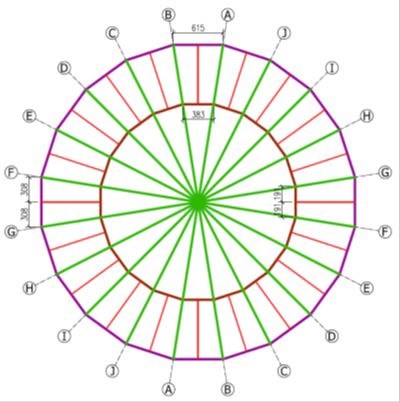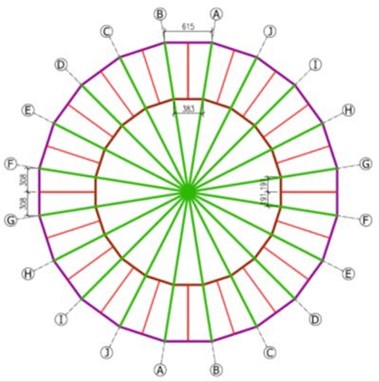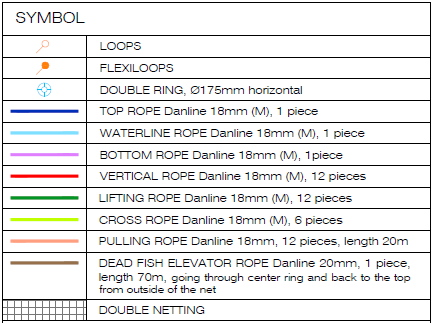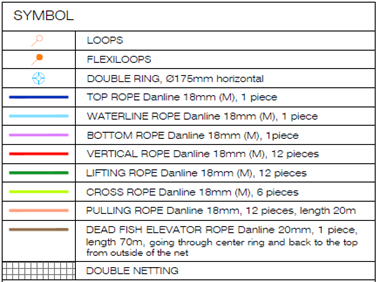1. Manufacturer information
1.1 Manufacturer information
Mørenot Aquaculture AS is an international supplier of equipment and services to the ocean-based fish farming industry. Traditional craftsmanship combined with extensive research and development, along with quality manufacturing means that we can offer our customer innovative solutions and the best possible quality, at competitive prices.
Mørenot AS is ISO 9001 certified and the group’s range of seine nets and mooring components are certified in accordance with NS 9415:2009. Our consultancy company, Aqua Knowledge AS, is accredited in accordance with ISO 17020 to carry out mooring analyses according to NS 9415:2009 and NYTEK regulations.
Further information: www.morenot.com
We are represented in Norway, Canada, GB, Spain, Turkey, Ireland, Iceland and China.
The company’s headquarter is in Ålesund.
Mørenot Aquaculture AS
Rasmus Rønnebergs gate 21
NO-6002 Ålesund, Norway
Tel: +47 70 20 95 00
Fax: +47 70 20 95 10
aquaculture@morenot.no
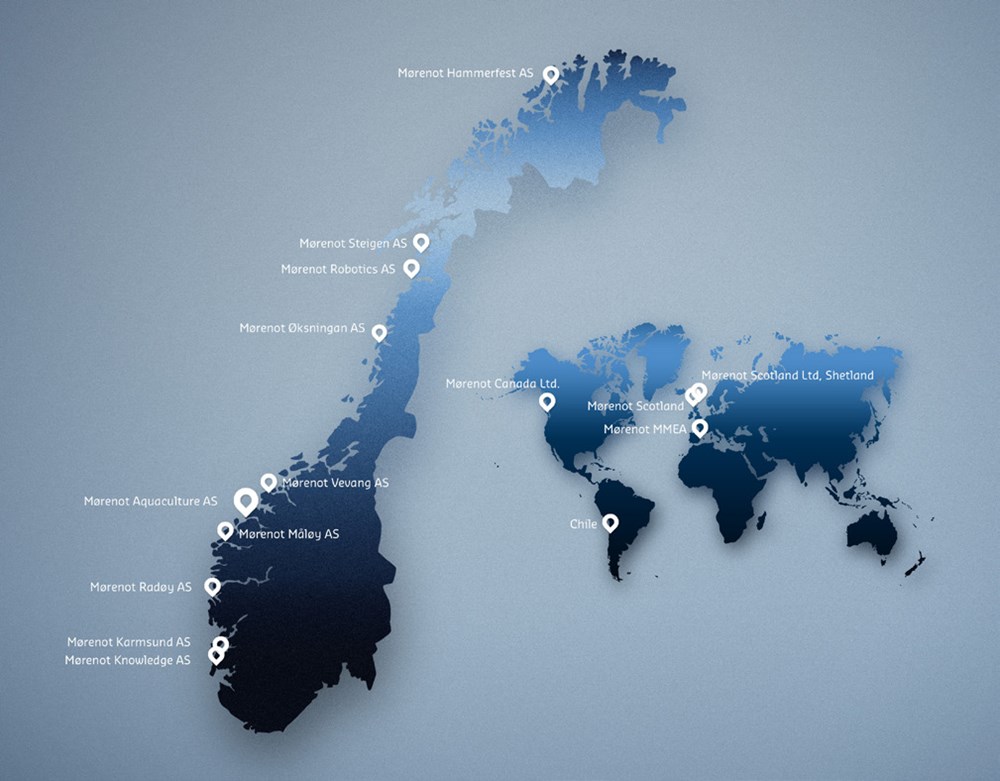
| Department | Address and phone number | Certified manufacturer of nets | Certified service station |
|---|---|---|---|
| Mørenot Aquaculture AS | 6280 Søvik Tel: 70 20 95 00 E-post: aquaculture@morenot.no | Yes | No |
| Mørenot Hammerfest AS | Fjordavn. 30 9610 Rypefjord Tel: 78 41 20 43 | No | Yes |
| Helnessund Bøteri AS | Langnesvik 8286 Norfold Tel: 75 77 97 00 | Yes | Yes |
| Mørenot Øksningan AS | Øksningan 8850 Herøy Tel: 75 05 94 90 | Yes | Yes |
| Mørenot Vevang AS | 6494 Vevang Tel: 71 29 96 30 | Yes | Yes |
| Mørenot Radøy AS | 5938 Sæbøvågen Tel: 56 34 99 40 | Yes | Yes |
| Mørenot Karmsund AS | Husøyveien 270 4262 Avaldsnes Tel: 52 84 57 70 | Yes | Yes |
| Delta Aqua Redes | St Carles de la Rapita | Yes | No |
Contact information Scotland:
Tel: +44 1859 540 432
Email: iain@netservicesshetland.co.uk
Contact information Shetland:
Tel: +44 1595 880 816
Email: david@netservicesshetland.co.uk
Contact information Spain:
Tel: +34977743445
Email: acomas@morenot.es
Contact information Canada:
Tel: + (1) 250 286 3249
Email: crn@connected.bc.ca
Our products and service stations are certified by Aquastructures AS. We have internal and external audits performed by different inspection bodies several times every year.
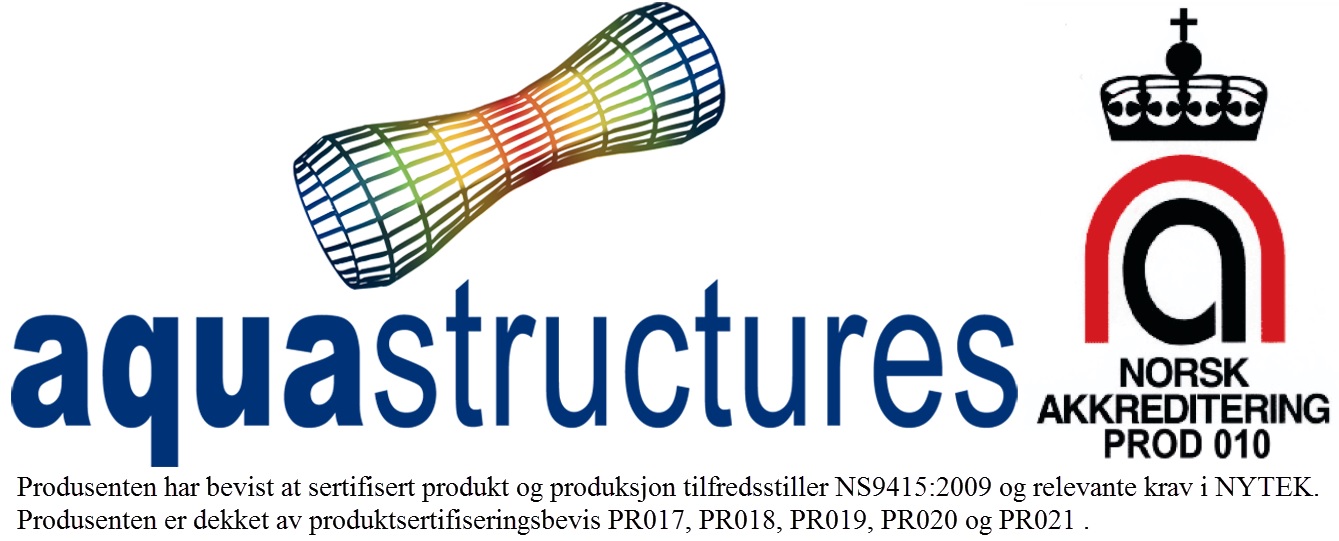
2. Definitions
3. Product information
This user manual describes the identification of parts, transportation, storage, handling, assembly, operation and maintenance of the nets produced by Mørenot Aquaculture to be used in fish farming. For sustained certification it is essential that the guidance and requirements described in this user manual are followed.
Nets provided by Mørenot Aquaculture are produced from high quality raw materials assembled with modern sewing machines. Our netlofts have highly qualified staff with extensive experience.
All net models supplied by Mørenot Aquaculture have been through extensive testing. We cooperate with reputable research institutes and use advanced computer programs when developing our net models. The customers can be assured that a net supplied by Mørenot Aquaculture will contribute to a safer and more profitable production of farmed fish.
3.1 Product identification
When receiving a net from Mørenot Aquaculture the packaging will be labelled with:
- Name of the customer
- ID-identification number on the net
- Circumference
- Depth
The net is identified by square plastic tubes which are mounted on the top rope. These can be placed at each corner or at the centre of the panel depending on the customer’s requirements.
The plastic pipes are engraved with essential information, and it is important that the tags are clearly visible at all times. The following inscription is engraved:
- Name of the manufacturer (name of the Mørenot Aquaculture company that has produced the net)
- Year of production
- Customer
- Serial number
- Circumference, depth, net identification number, mesh size
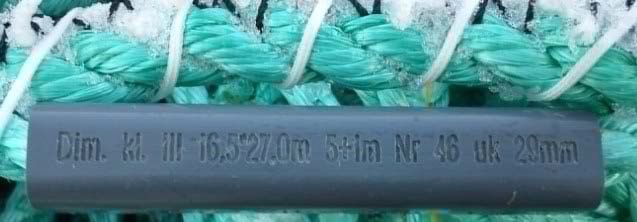
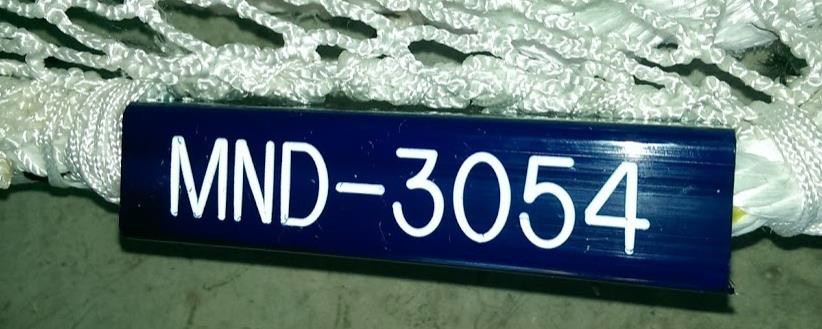
There are also several flag tags attached to the net. These are placed in the centre of the base and on the ropes on the top of the net. One side shows the producers name, the other side states the ID number, the customer’s name and the net dimensions.
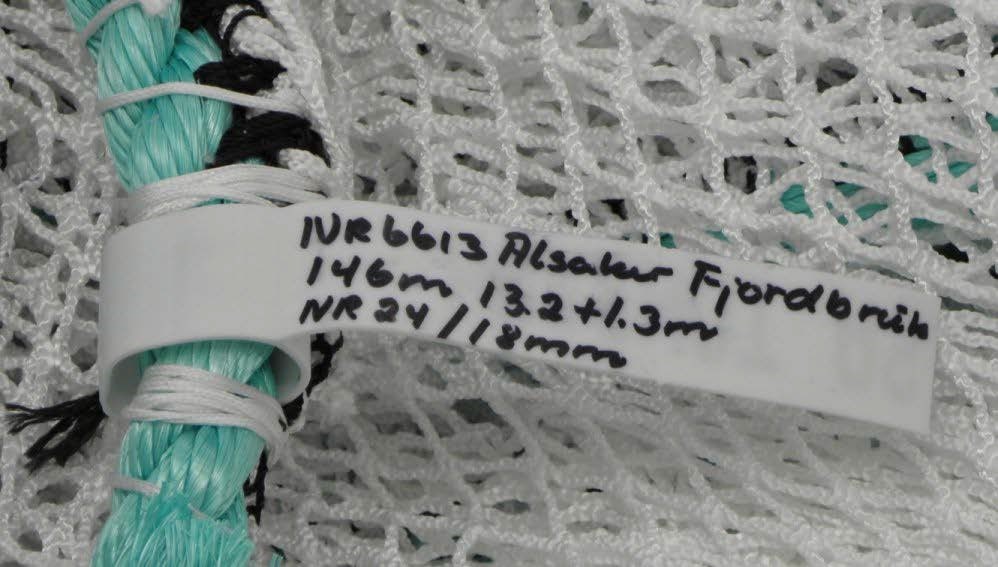
The ID-number on the net equals the certificate number. The certificate and other documentation may be downloaded from our netlog http://notlogg.morenot.com. User name and password will be given by the manufacturer of the net, while documentation on paper will only be given on request from the customer.
3.2 Changes or modifications
Repairing and reconstruction of nets can only be performed by service stations that are certified in accordance with the NYTEK regulations or the regulations in the countries where the nets will be used. The service stations are obliged to ensure that any modifications are in compliance with applicable regulations and operating instructions from the manufacturer of the net. The service stations must document all changes and work performed on the net.
Major changes and modifications must be made only in consultation with the manufacturer. Major changes primarily must be understood as changes that will lead to greater impact to the net in terms of forces applied from current and waves. These changes could be, but are not limited to; extension of net (adding more depth), double netting in some areas, removing of ropes etc.
Changing of the original certificate may only be carried out by the manufacturer of the net.
4. The main component and its constituents
4.1 Drawings
A drawing with all technical specifications is made for each net produced by Mørenot Aquaculture. The drawings are part of the product documentation, and are available for the customer at the Netlog http://notlogg.morenot.com
4.2 Net models
Mørenot Aquaculture produces a wide range of nets to suit various net pens and operating methods.
The models are based on a set of well tested and proven models.
Review of basic models provided by Mørenot Aquaculture. All models can be adapted to the customer’s specifications, site specific conditions and other equipment to be used at the site.
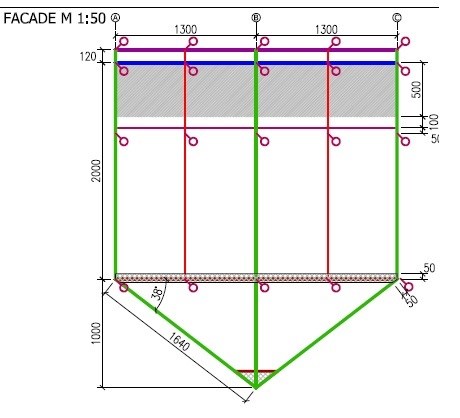
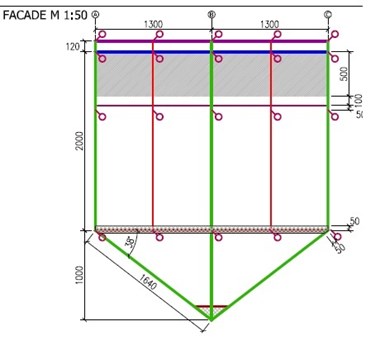
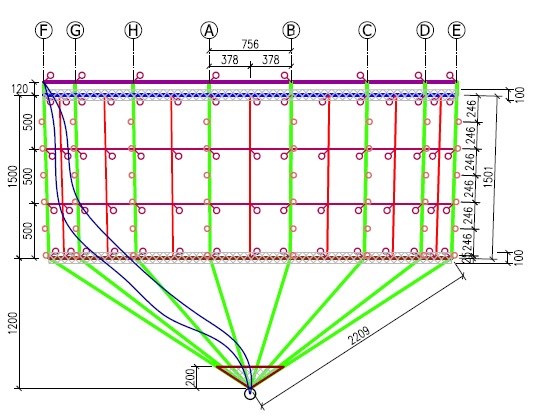
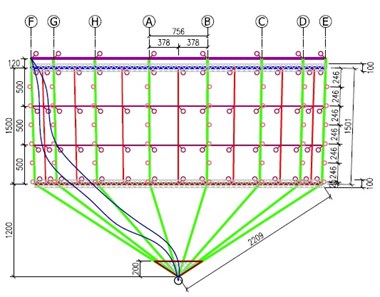
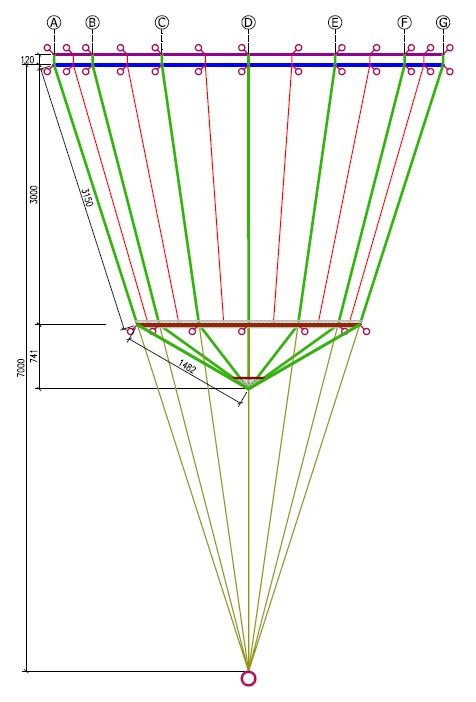
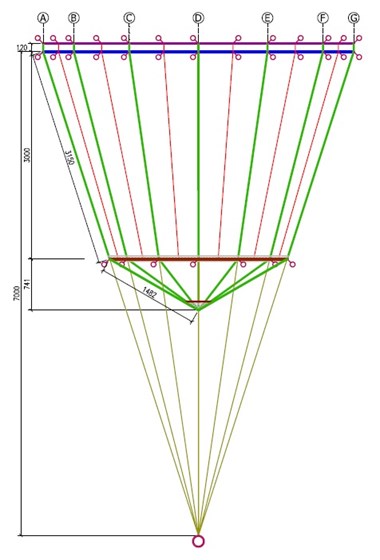
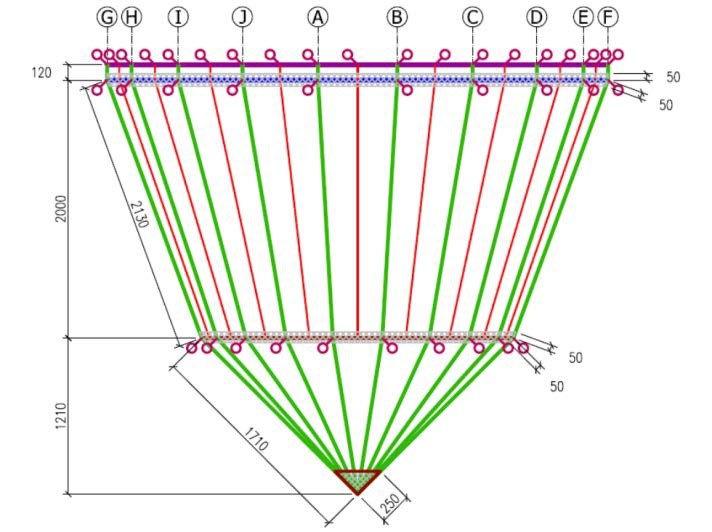
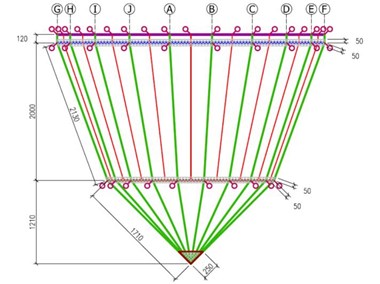
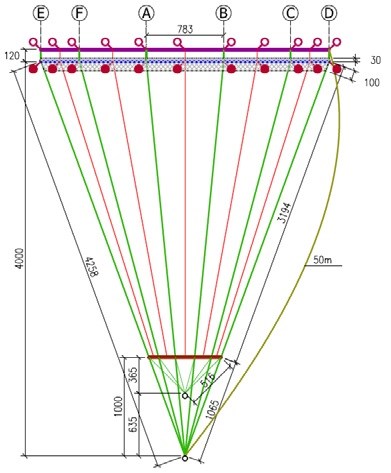
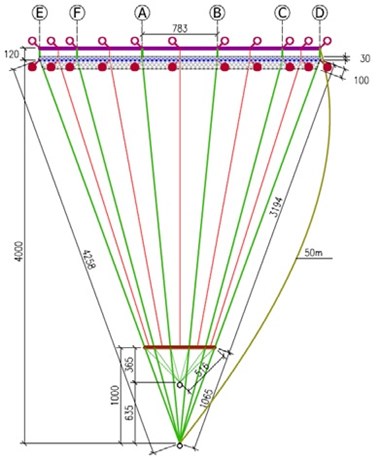
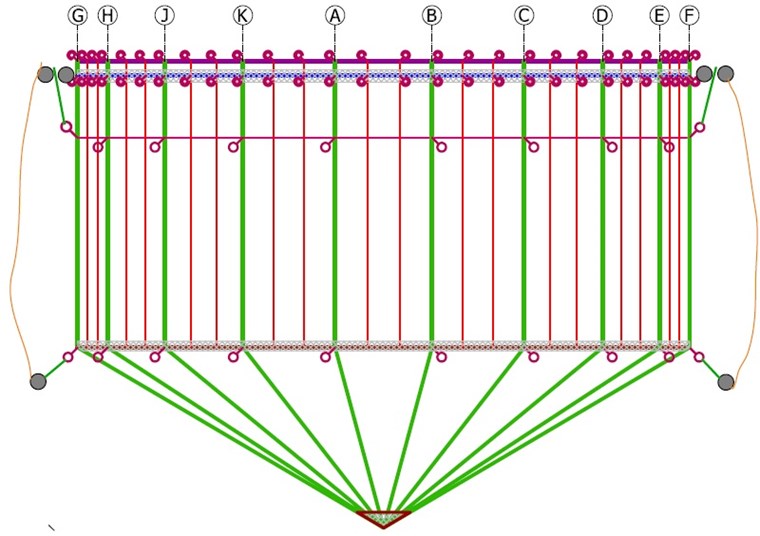
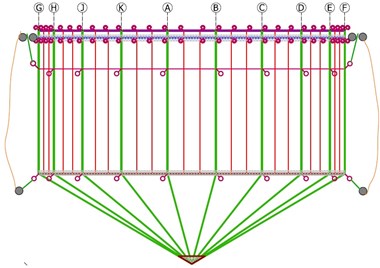
4.3 Components
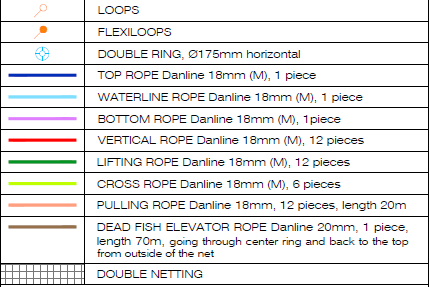
The net is made of netting and ropes. Mørenot Aquaculture primarily uses the following textiles in the netting:
- Nylon
- Dyneema®
- HDPE
- Polyester
Nylon is the most commonly used material in nets. Polyester is in some areas used instead of Nylon.
In addition to being one of the strongest fibres, Dyneema® also has a superior strength and resistance against chafing and abrasion.
HDPE is specially suitable for protection against predators attacking from the outside.
Danline is mainly used in the ropes and loops. When extra strength is required we also use polyester slings (Flexiloop). These provide more strength in the tying point towards the pen. Slings and rings in various materials can also be used.
All production methods are thoroughly tested and documented.
All different variations of slings, rings and ropes, and their positions, are described with text and symbols on the drawing of the specific net.

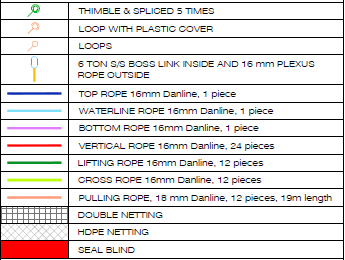

4.4 Traceability
The ID-number on the net equals the number on the certificate. The ID number is unique, and raw materials used in the net are traceable.
5. Regulations and limitations for net usage
5.1 Dimension class
The net should only be used at the sites it is dimensioned and approved for. Dimensioning parameters are stated on the certificate, and must relate to the dimensioning current and waves described in the site survey.
It is the fish farmer’s responsibility to ensure that the net is appropriate for use in the intended environment.
5.2 Certificate validity
The net certificate is only valid when all requirements and limitations described in the user manual are followed.
The product documentation for a new net is only valid for the time stated in the certificate. Thereafter a service card is required in addition to the original certificate.
In addition to requirements and limitations described in the user manual, national legislation and standards regarding the use of nets in fish farming must be followed.
When the breaking strength of the netting is 100% or more, ref. requirements in table 9 in NS9415:2009, the service card is valid for 24 months. If the breaking strength is between 100 and 65% (60% for the jump fence) the validity of the service card is 12 months.
If the breaking strength of the netting goes below 65% (60% for the jump fence) the net should no longer be used for fish farming.
The product documentation’s validity period starts when the net is installed to the cage, but maximum 12 months after date of issue. This presupposes that the net is handled and stored according to the requirements in this user manual.
Under special conditions, where the product documentation’s validity period expires before the net can be taken out of the sea, a certified service station can assess if a further three months validity period can be given based on the nets documentation and visual assessment of the net. All service stations in the Mørenot Aquaculture Group have the competence and fixed procedures to assess prolonging the validity period.
5.3 Pre use inspection
Due to the risk of damages during net transportation and storage, the fish farmer must inspect all new nets and nets that have been serviced before fish is put into them. During inspection, the netting, seams and ropes must be checked. The inspection should be performed by divers or an ROV when the net is deployed and sinker tubes /other weight are installed. It must also be verified that the net has the intended shape.
See chapter 9- Maintenance- for instructions concerning repairing of damages.
The net certificate states the maximum allowable loads applied to the net from the pen. Limitations and recommendations with regard to the use of weights are also stated in the net certificate. The use of weights must also be assessed in relation to the current at the site and the type of weighting system.
6. Transportation and storage
6.1 Packing, loading, unloading, transportation and storage
Receiving a net:
Immediately after delivery the wrapping must be controlled for damages. If the wrapping is damaged it indicates that the net could also be damaged. The net then have to be inspected, and if any damages are discovered the carrier and the supplier must be notified. Significant damages must be repaired by the supplier/producer of the net.
Unwrapping:
Unwrapping nets should be done just before deployment, and the nets should be kept in their original wrapping until deployment. If the net has been unwrapped before transportation to the site it must be transported with care, and preferably in a big bag or a box without any uneven surfaces.
Storage:
The netting and the ropes used in our nets are treated to be resistant against UV rays. But the fibres may still be impaired if exposed to the sun for a longer period of time, and such exposure should be avoided.
The netting and the ropes are sensitive to crushing, grinding, cutting / filing against sharp edges and rough surfaces.
Note! Nets must not be exposed to formic acid, caustic soda and other chemicals that can damage the netting or the ropes.
6.2 Loading and unloading
The nets should only be lifted with the use of approved lifting devices.
Loading and unloading must be done with care to avoid damages on the net or the wrapping. If the wrapping is undamaged when the net is received from the supplier it should not be unpacked for internal transport and storage until it is deployed at the site.
6.3 Towing
If the net is towed when attached to the net pen, this must not be at a higher speed than what equals the dimensioning current the net is designed to withstand.
7. Installation
7.1 Prior to stocking
The net must be appropriate for use in its intended environment. The dimensioning current and wave are stated on the net certificate, and the fish farmer is responsible to ensure that the net is adequate for the site where it is used.
The fish farmer is responsible for inspecting the deployed net before fish is put into it. This is due to possible damages during transportation, handling and storage of the net. Netting, seams, ropes and the weighting system must be inspected. The shape of the net must also be controlled, and the fish farmer must be certain that there is no unintended contact between the net and the other main components and the weighting system. This inspection must be done after deployment of the net, and before fish is put into it. The inspection should be done by divers or ROV.
7.2 Required qualifications
Installation and inspection must only be carried out by experienced personnel or personnel that have been properly trained. Incorrect installation may cause unwanted incidents, such as fish escaping.
7.3 Installation instructions – attachment to the pen
User manuals for net and pen must be available for personnel installing the net into the pen.
The points for attaching the net to the pen must have enough capacity to hold the loads subjected to them from the net. The highest loads that can be subjected to an attachment point are stated in the net certificate.
The distance between the intended attachment points in the net and the pen must match each other. This is to make sure that the load in the system is calculated and that the net will have its correct shape when installed. It must also prevent contact with and chafing from the pen, the weighting system, the moorings or other equipment.
The net shall be attached to the pen at the attachment points / loops in the cross between waterline rope and lifting ropes.
The weighting system must be attached at the attachment points / loops in the cross between lifting ropes, bottom rope and cross ropes.
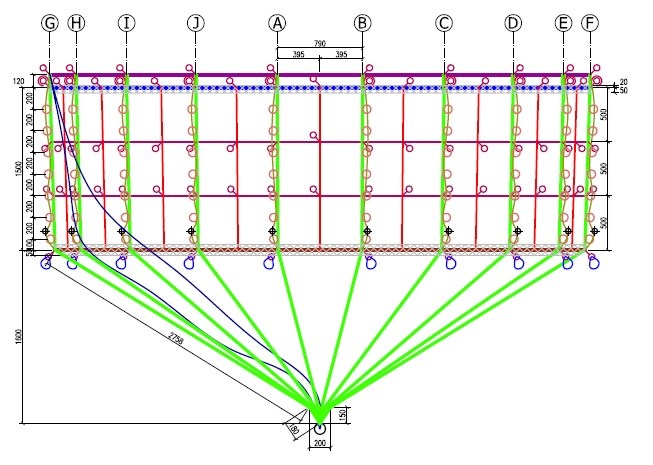
The weighting system must be placed and attached to the net or the pen in a manner that do not cause
chafing on the net under the envisaged environmental conditions.
It should be possible to disconnect the weight/loads from the weighting system before pulling up the
net. All loadings from the weighting system must be loosened before the net is pulled up.
Deploying the net must be done in a controlled manner using lifting equipment that have the correct
dimension in relation to the net size, to prevent injuries and accidents.
Feed pipes, ropes and other equipment, going through the netting, must be properly secured to prevent
chafing and damages to the netting. In general it is not recommended to have anything going through
the netting, but if done it should be checked regularly, at least weekly.
7.4 Net inspection on site
After stocking and installation the net must be inspected before fish is put into it. This inspection must be logged and documented.
7.5 Interface with other components
The fish farmer is responsible to ensure that the attachment points in the pen are sufficiently
dimensioned to hold the loadings from the net.
The fish farmer is responsible to ensure that the attachment point on the net and the pen match each
other. This is to make sure that the loadings in the system are as calculated and that the net will have its
correct shape when installed. It is also to prevent contact with and chafing from the pen, the weighting
system, the mooring or other equipment.
7.6 Mobile secondary equipment
Mobile secondary equipment must be used in a manner that does not cause any damages to the net.
Temporary attachments of mobile secondary equipment must not cause unintended loadings, chafing, wear or other damages to the net.
To prevent accidents and damages to the net all secondary equipment must be secured so that it remains in place during bad weather conditions and other events.
7.7 Fixed secondary equipment
In order to prevent damages that can occur with time, penetration of the net should be avoided when attaching fixed secondary equipment to other equipment at the site.
All secondary equipment must be properly tied to prevent unintended loadings, chafing, wear or other damages to the net.
All fixed secondary equipment must be secured against accidents and weather conditions to prevent it, or parts of it, from becoming loose and causing damage to the net.
8. Requirements during the operation period
8.1 Fish size
Mesh size should be tailored to fish size, and variation in fish size, to prevent fish escaping.
8.2 Arrivals and mooring of boats
When loading and unloading fish and when receiving and mooring boats at the site, the fish farmer must make sure that the moorings, the boats and the equipment used in the various operations do not cause any damage to the net. All direct contact with the net should be avoided.
Before taking a boat to the site the weather and other conditions should be assessed. If any risk is uncovered the arrival of the boat should be postponed.
8.3 Standard handling of the net
The weight from the weighting system must be removed before the net is pulled up. The net must be handled carefully to prevent it from being damaged.
The net must only be pulled up by lifting ropes or ropes attached to lifting ropes. These ropes are described in the drawing of the net or the specifications received from the supplier of the net.
Pulling up the net must be done carefully, and it is recommended to do this in small steps to avoid unnecessary strain at smaller areas of the netting/ ropes.
Lifting and lowering the net must only be done using the attachment points on the net, and after the weighing system has been taken off.
The netting must not be exposed to any strain. The net must not be lifted by the netting.
Stocking and restocking must be undertaken in a controlled manner, and with properly sized lifting device to prevent damage and wear on the net. Stocking and restocking should be done under favourable weather conditions.
8.4 Normal installation of the net
The fish farmer is responsible to ensure that the attachment points on the pen are sufficiently dimensioned to hold the loads from the net.
The fish farmer is responsible to ensure that the attachment point on the net and the pen match each other. This is to make sure that the loads in the system are as calculated and that the net will have its correct shape when installed and to prevent contact with, and chafing from, the pen, the weighting system, the moorings or other equipment.
8.5 Net cleaning on site
Make sure there is no damage to the net while cleaning on site.
Net washers can get stuck in the netting and cause damages, and should therefore be monitored when used. It is recommended to handle this equipment manually when possible to ensure that the forces inflicted on the netting are minimized if the washer does get caught in the netting.
Water pressure and the size of nozzle must be adjusted to have minimum impact on the netting.
8.6 Handling the net and the weighting system
When handling the weighting system; contact with the netting must be avoided. The netting should be evenly loaded during operation of the weighting system, and each attachment point on the net must not be exposed to higher loads than it is dimensioned for.
Lifting and lowering the net must only be done using the attachment points on the net, and after the weighing system has been taken off.
8.7 Special environmental conditions
Drifting ice and other objects in the water that might cause damage to the net should be lead away before drifting into the net.
If icing occurs, or large quantities of snow appears, the jump net can be lowered into the sea to melt away the ice and the snow. This must only be done if the fish farm otherwise could suffer more permanent damage.
8.8 Extraordinary strain from boats
Before a big boat arrives the weighting system must be checked to make sure that the net is correct positioned in the water. The boat must be positioned at the most appropriate side of the pen, considering the current that day, to avoid contact with the net.
Neither the boat, the mooring of the boat, or the equipment used on the boat must affect the net.
9. Maintenance
9.1 Risk assessment
According to NS 9415:2009 a risk assessment for design, assembly and operation of the main components at the fish farm must be conducted. The risk assessment shall cover the specific points concerning each site and its operating conditions. Risk assessment should be based on a systematic risk analysis and be implemented specifically for each individual site.
Mørenot Aquaculture AS has carried out it’s own risk assessment covering “engineering and assembly”, the fish farmer must carry out the risk assessment on the net while in operation.
The risk assessment may and should lead to changes in the operations and maintenance programs as stated in the user manual. However, changes that reduce the numbers of inspections or number of objects to be inspected must be avoided. The assessments are to give guidance on how thorough the inspection on each individual check point on each individual site is to be. It might for example be necessary to have a more thorough inspection on exposed sites than the more sheltered sites.
9.2 Inspection and maintenance program operating conditions
All inspections must be documented and stored with other documentation concerning the specific net.
The documentation might be stored in Mørenot Aquaculture’s netlog and/or other databases used to store and trace all documentation concerning the specific site.
There are four categories of inspections that have to be performed for the net.
- Periodical inspection 1
- Inspection performed once every week minimum
- Periodical inspection 2
- Inspection performed once every 6th month minimum
- Main inspection
- Inspection performed at a certified service station
- Incident initiated inspection
- Inspection performed in advance of or after planed or unexpected incidents that might cause damages to the net
9.3 Periodical inspection 1:
The personnel working on the site may perform the periodical inspection 1. The inspection is performed once every week minimum.
The inspection involves the following:
- Check all tying points between the net and the pen – both at waterline and at top rail
- Visual inspection of the net shape- check for deformations and reductions in the nets volume that might indicate irregularities in the weighting system.
- Check for fouling- which might cause unintended strains to the net.
- Check for holes in netting in those parts visible from the surface of the water.
- Check the relevant secondary equipment – it must be safely secured from causing any damages to the net.
Illustration of an example: Periodical inspection 1- Checklist
All checkpoints must be controlled, but a variety of forms and logging might be used. Documentation of the inspection must be saved.
| Checkpoint: | Condition / comment: | Inspection date: | Inspector: |
|---|---|---|---|
| Tying point net/pen | Breach in two ropes. Fixed immediately. Everything else OK | 08.11.12 | David |
| Weighting system/deformation | All nets have a good shape. | 08.11.12 | David |
| Fouling | Some blue mussels. OBS! | 08.11.12 | David |
| Holes/damages | No holes | 08.11.12 | David |
| Secondary equipment | Feed pipe in M5. Fixed immediately | 08.11.12 | David |
9.4 Periodical inspection 2:
This inspection must be performed once every 6 months minimum. The inspection is visual, and must be performed by divers or ROV. The risk assessment on the site will form the base for how thoroughly the inspection is performed and if the 6 month minimum interval should be increased.
The inspection involves the whole net, including the bottom.
The following must specifically be checked:
- Holes or damages caused by the weighting system.
- Holes or damages caused by secondary equipment.
- The general condition and the shape of the net.
- Fouling.
Illustration of an example: Periodical inspection 2- Checklist
All checkpoints must be controlled, but a variety of forms and logging might be used. Documentation of the inspection must be saved.
| Checkpoint: | Condition /comment: | Inspection date: | Inspector: |
|---|---|---|---|
| Weighting system/ net | No sign of contact between the net and the weights | 19.11.12 | Diver 1 |
| Secondary equipment / mortality collection system | Lift up out of place. Moved to the centre. No wear registered | 19.11.12 | Diver 1 |
| General condition | No holes. The net has its intended shape | 19.11.12 | Diver 1 |
| Fouling | Clean netting. No fouling | 19.11.12 | Diver 1 |
9.5 Main inspection
After a given period stated in the certificate, the net should have a service card in addition to the original certificate.
The main inspection is performed on land, at a service station. The inspection and any repairs must be documented and traceable. The service card should be stored together with the certificate and in relation with the net.
The inspection is done on the complete net. It should include tests of breaking strength in the netting and an evaluation of the condition of ropes and other materials.
Rebuilding should only be performed after consulting the manufacturer of the net.
9.6 Incident initiated inspection
This inspection should be performed in relation with sudden and unforeseen, as well as planned, incidents that might cause damage to the net.
This inspection should also be performed in advance of operations that have a higher risk of fish escaping, such as harvesting or de-lousing.
The inspection is visual, and might be performed by personnel employed at the site. If needed, divers or ROV/camera might be used.
Incident initiated inspections must at a minimum be performed in relation with the following:
- After installation of the net and before putting fish into it
- Before pulling up the net for de-lousing, harvesting or other operations.
- Periodical inspection 2 must be performed no longer than 6 weeks in advance of such operations
- Before and after bad weather conditions and other incidents that have/might have inflicted high loading to the net.
- After other incidents that might have caused strain and damages to the net.
The risk assessment on the site should form the base for how thoroughly the inspection is performed.
| Incident | Net inspection before fish deliveries | ||
|---|---|---|---|
| Check: | Condition / comment: | Inspection date: | Inspector: |
| Weighting system / net | No sign of contact between net and weights | 26.11.12 | ROV |
| Secondary equipment / mortality collection system | Lift Up OK. Little dead fish | 26.11.12 | ROV |
| General condition | The nets are well shaped. | 26.11.12 | ROV |
| Fouling | Some fouling 5 meters from the surface, but no mussels | 26.11.12 | ROV |
10. Logging
In the operational period, all inspections, maintenance and replacements of parts must be documented and logged in accordance with national legislation and standards, as well as the following:
- Type of action (inspection, maintenance, replacement)
- Result of action
- Conclusions/ follow up
- Date
- Name of person inspecting
All incidents might be logged in (http://notlogg.morenot.com). Username and password are given on request.
